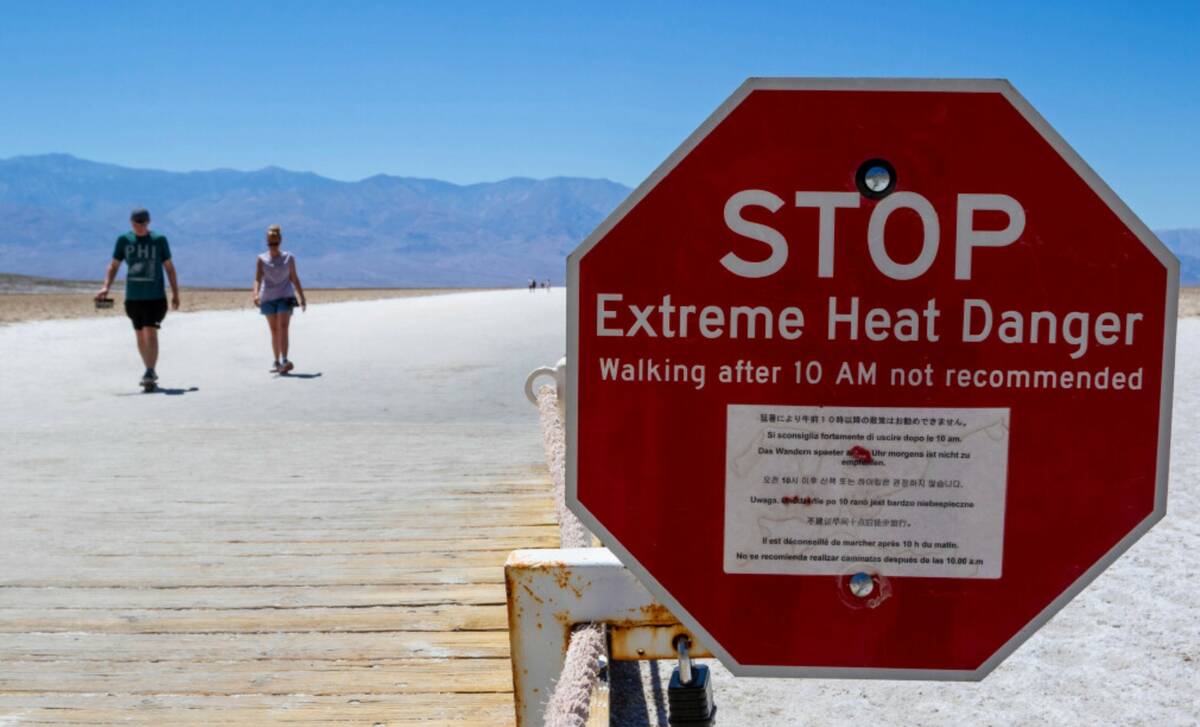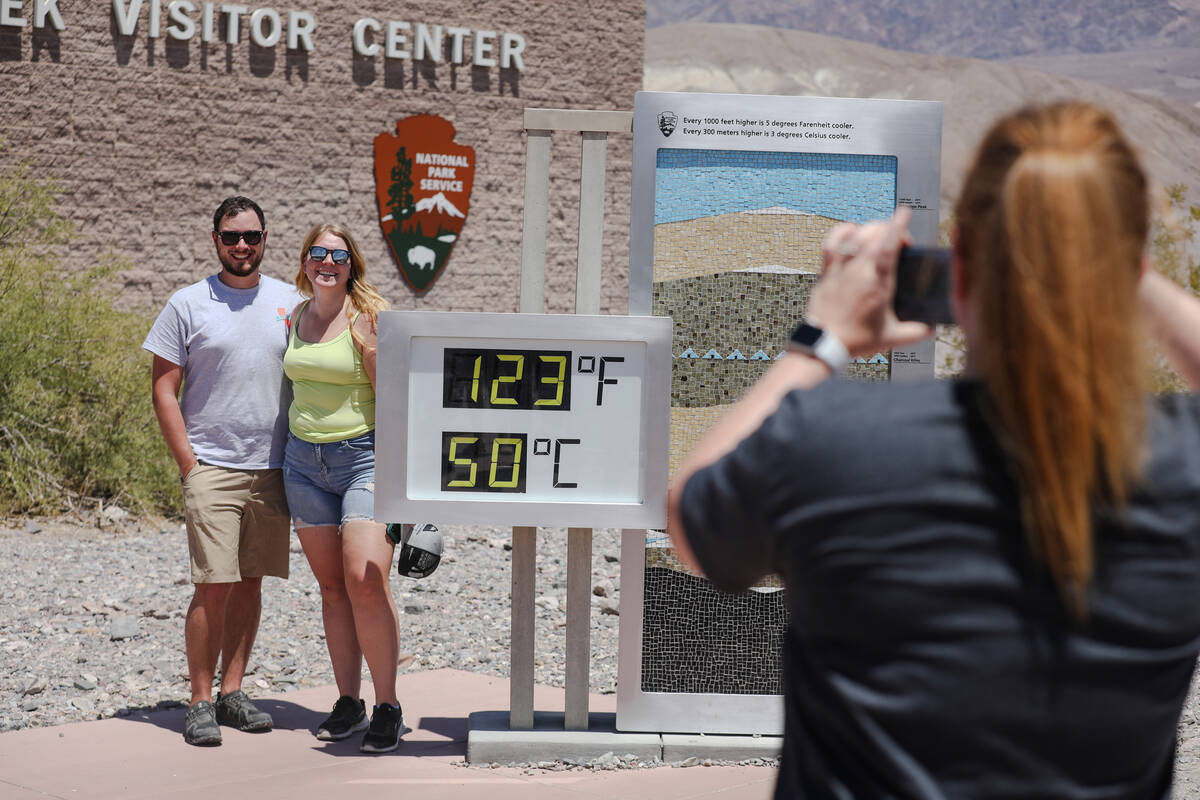Will Death Valley shatter world record for heat? It depends on whom you ask
When it creeps toward record-breaking heat in Death Valley National Park, ranger Abby Wines keeps an eye out for Darth Vader.
She doesn’t usually understand what he’s saying as he hangs out in parking lots speaking to passersby. But the “Star Wars” fan is one of many who make the trip out to the hottest place in the world in the summer — and the cruel, deadly temperatures get more intense every year.
As the climate changes, people throughout the world look to Death Valley as a window to the future, Wines said.
“We’re kind of the leading edge,” she told the Las Vegas Review-Journal this week. “The harbinger for what surrounding areas in the desert could become.”
Meteorologists say a new record for the hottest temperature ever recorded on Earth may become a reality of a warming world, possibly as soon as this weekend. What’s not agreed upon, though, is what that record actually is.
Doubt cast on an official record
Christopher Burt, the Weather Channel’s longtime historian based in California, has unilaterally said that the current record set in July 1913 — 134 degrees Fahrenheit — is meteorologically impossible and likely based on a faulty reading.
“The only explanation would be space lasers,” Burt told the Review-Journal.
What he finds more reliable as a record is the 130-degree number recorded in 2020 and 2021, he said.
Still, 134 is what the National Weather Service uses as a benchmark for Death Valley’s extreme.
Despite a popular map on the social network X that suggests otherwise, current forecasts give Death Valley only a 25 percent chance of reaching 130 degrees on Monday or Tuesday, weather service meteorologist Brian Planz said.
It’s likely to stay closer to 128 degrees on Sunday and 126 on Monday, Planz said.
For Burt, the world’s hottest and coldest temperatures show abnormality, he said. It’s possible that other places in the world could outpace Death Valley, Burt added, as climate change progresses.
“Climate scientists put weight on these extremes because it supports evidence about global warming, ” Burt said. “Other extremes are also going to rise commensurately.”
How to stay safe
The National Park Service doesn’t dissuade visitors from enjoying Death Valley in the summer, but there are clear guidelines to ensure safety, said Wines. And that doesn’t change whether it’s 120 degrees or above 130.
Massive signs — translated into eight languages — warn drivers about extreme heat danger as they maneuver throughout the park, Wines said. Staying on paved roads is important, in the event that visitors’ cars break down.
Visitors shouldn’t hike at low elevations after 10 a.m., especially because rescue helicopters cannot operate during some extreme temperatures, Wines said. Signs with a big X over a helicopter usually get that message across.
The heat is so intense at the day’s peak that rangers don’t recommend that drivers leave their air-conditioned cars for more than five minutes at a time, Wines said.
“Here in Death Valley, our biggest message is about trying to get people to minimize their exposure to the heat,” the park ranger said. “That’s the most important thing.”
Contact Alan at ahalaly@reviewjournal.com. Follow @AlanHalaly on X.



















